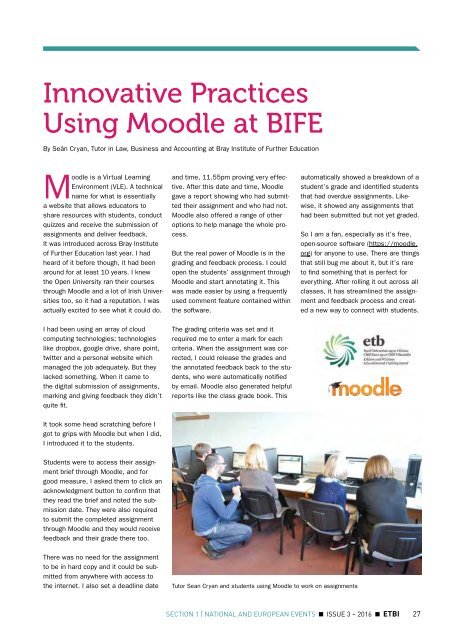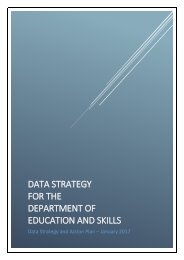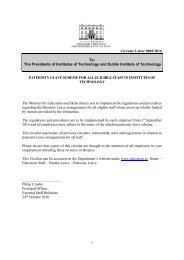ETBI-News-Summer-2016-web
ETBI-News-Summer-2016-web
ETBI-News-Summer-2016-web
Create successful ePaper yourself
Turn your PDF publications into a flip-book with our unique Google optimized e-Paper software.
Innovative Practices<br />
Using Moodle at BIFE<br />
By Seán Cryan, Tutor in Law, Business and Accounting at Bray Institute of Further Education<br />
Moodle is a Virtual Learning<br />
Environment (VLE). A technical<br />
name for what is essentially<br />
a <strong>web</strong>site that allows educators to<br />
share resources with students, conduct<br />
quizzes and receive the submission of<br />
assignments and deliver feedback.<br />
It was introduced across Bray Institute<br />
of Further Education last year. I had<br />
heard of it before though, it had been<br />
around for at least 10 years. I knew<br />
the Open University ran their courses<br />
through Moodle and a lot of Irish Universities<br />
too, so it had a reputation. I was<br />
actually excited to see what it could do.<br />
I had been using an array of cloud<br />
computing technologies; technologies<br />
like dropbox, google drive, share point,<br />
twitter and a personal <strong>web</strong>site which<br />
managed the job adequately. But they<br />
lacked something. When it came to<br />
the digital submission of assignments,<br />
marking and giving feedback they didn’t<br />
quite fit.<br />
and time, 11.55pm proving very effective.<br />
After this date and time, Moodle<br />
gave a report showing who had submitted<br />
their assignment and who had not.<br />
Moodle also offered a range of other<br />
options to help manage the whole process.<br />
But the real power of Moodle is in the<br />
grading and feedback process. I could<br />
open the students’ assignment through<br />
Moodle and start annotating it. This<br />
was made easier by using a frequently<br />
used comment feature contained within<br />
the software.<br />
The grading criteria was set and it<br />
required me to enter a mark for each<br />
criteria. When the assignment was corrected,<br />
I could release the grades and<br />
the annotated feedback back to the students,<br />
who were automatically notified<br />
by email. Moodle also generated helpful<br />
reports like the class grade book. This<br />
automatically showed a breakdown of a<br />
student’s grade and identified students<br />
that had overdue assignments. Likewise,<br />
it showed any assignments that<br />
had been submitted but not yet graded.<br />
So I am a fan, especially as it’s free,<br />
open-source software (https://moodle.<br />
org) for anyone to use. There are things<br />
that still bug me about it, but it’s rare<br />
to find something that is perfect for<br />
everything. After rolling it out across all<br />
classes, it has streamlined the assignment<br />
and feedback process and created<br />
a new way to connect with students.<br />
It took some head scratching before I<br />
got to grips with Moodle but when I did,<br />
I introduced it to the students.<br />
Students were to access their assignment<br />
brief through Moodle, and for<br />
good measure, I asked them to click an<br />
acknowledgment button to confirm that<br />
they read the brief and noted the submission<br />
date. They were also required<br />
to submit the completed assignment<br />
through Moodle and they would receive<br />
feedback and their grade there too.<br />
There was no need for the assignment<br />
to be in hard copy and it could be submitted<br />
from anywhere with access to<br />
the internet. I also set a deadline date<br />
Tutor Sean Cryan and students using Moodle to work on assignments<br />
Section 1 | National and European Events issue 3 – <strong>2016</strong> <strong>ETBI</strong> 27





